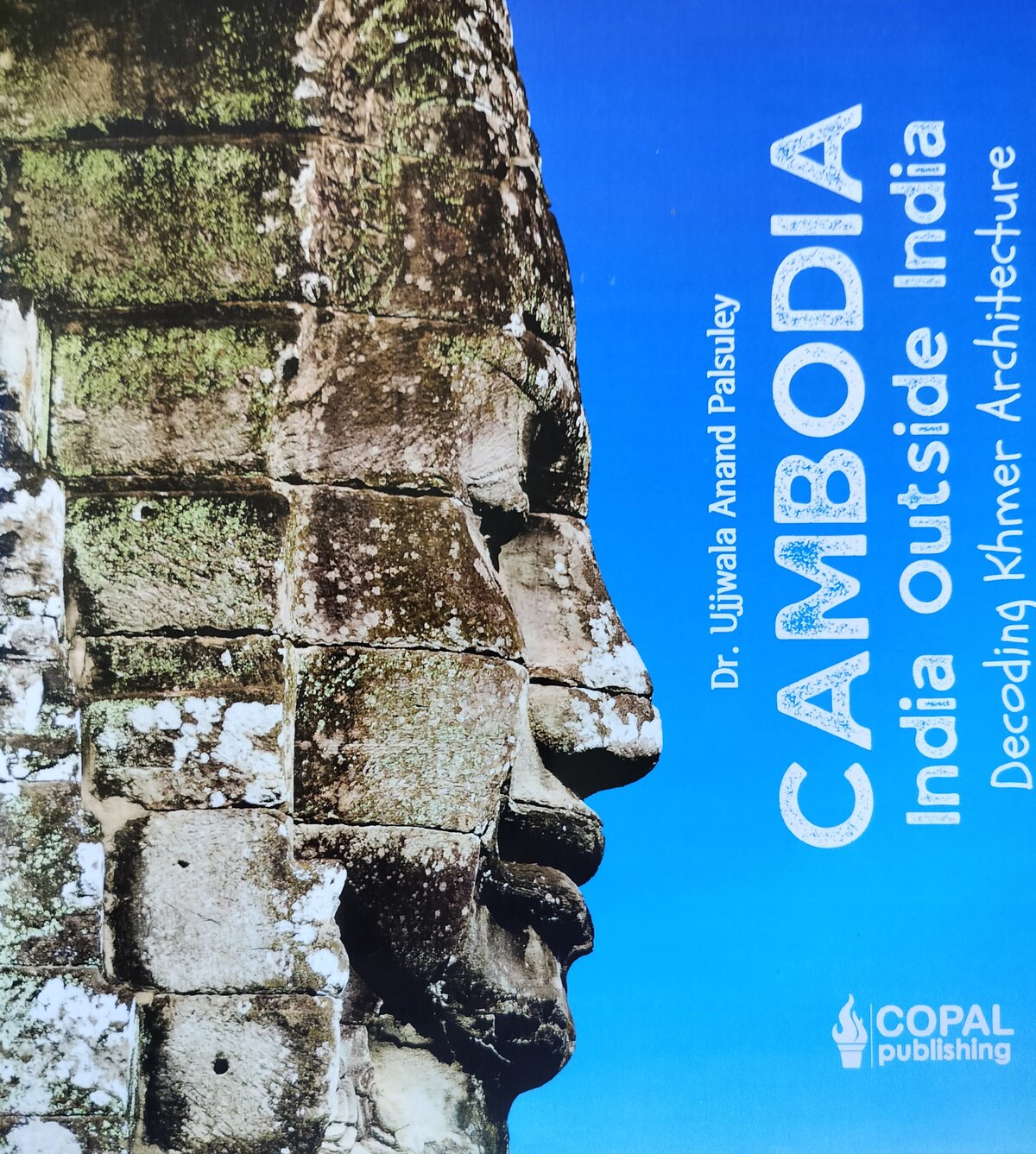gopura
sk गोपुर gopura, "elaborate gateway" |
Gopura in Indian architecture refers to a tower above a gateway or archway, "towers at the entrances of a temple". The term is also used as saṃdoha, a "meeting place" of the Yoginis.
by Ujjwala Anand Palsuley
One of the most extensive study in comparative architecture, related to Angkorean and mostly Dravidian Indian temples.

“This book focuses on the influences of Dravidian temple architecture on the Khmer temple architecture with a method to study temple architecture holistically”, notes the author in her preamble; “There is a systematic transmission of knowledge from India to Cambodia which has developed a new kind of temple architecture in that region. The Dravidian temple architecture influenced Khmer temple architecture of Cambodia beyond the physical form of the temple.”
Out of the three main temple styles in India (Nagara in Northern India, Dravida in South India and Vesara in Karnata region), the study centers on Dravida style as observed in major temples at Kanchipuram, Madurai, Srirangam, Rameshwaram, reaching its peak in the 11th century with the Brihadeshwara temple in Tanjavur, at a time when Khmer King Suryavarman I and Chola Emperor Rajendra Chola were in close contact. [1]
After considering the various concepts of “Indianization” developed by several authors such as G. Coedès, O.W. Wolters, C.C. Berg, P. Mus, R.C. Majumdar, Van Leur, the author, an architecture historian, studies the main traits of Dravidian and Khmer temple architectures, noting for the Khmer one the importance of lintels in decoration, divided in two types by Lunet de Lajonquiere: lintels with Makaras, and lintels where Makaras are replaced by flowers.
About the Khmer temple architecture during the reign of Indravarman I (877−889 CE), characterized by the “Roluos style”, the author points out two major innovations: “the gopura, entrance pavilion sheltering the guardian deity of the temple, and the libraries, oriented towards the temple, one on each side, if two, and on the right side of the temple, if one.” Interestingly, she assumes that those were real libraries, “probably running back to the earliest day of Funan, wherein a Chinese visitor mentioned about libraries and books in it.” Rectangular with gable ends, they were initially made of one single vaulted hall.
As for Angkor, “an epitome of Khmer temple architecture”, the author stresses the importance of “the eminent brahman Divakarpandita”, chief advisor to King Suryavarman II not only in the architectural conception of the temple but also in the implementation of the Devaraja worship, “changing the precedence of Shiva worship.” She uses the term garbhagriha to name the innermost part of the central sanctuary, at the center of the Bakan (inner gallery). This term, meaning in Sanskrit the “womb chamber” containing the murti (statue or icon) of the temple’s primary deity, is used in India for Hindu, Jain and even Buddhist temples, but usually not for Khmer temples.
The circulation inside Angkor Wat is also carefully studied, and the author reminds us of the heated discussion between George Coedès, who as early as 1911 defined Angkor Wat as “a temple to Vishnu, and perhaps to the king who was identified to the deity even during his life”, and Jean Przyluski (not Przylluski as stated in the book), who in 1933 objected to the term “temple”, asserting that it was a gigantic tomb, in which the processions performed the prasvya, a funerary Hindu circulation always keeping the central shine to the left. As a result, Coedès conceded the term of “funerary temple”, which had been used by Louis Finot since 1929.
In closing, the author proposes a detailed chart showing “16 similarities, 15 variations and 18 interpretative similarities out of 49 parameters tested” between the temples of Brihadeshwara and Angkor Wat. It sets the basis for “evolved levels of temple study” which depart from the “conventional approach of studying temples”.
[1] To illustrate the closeness between Khmer and Chola Empires, the author shares the following historic fact: “When Kullotunga I, the Chola king, was constructing or enlarging the famous Shiva temple at Chidambaram, Suryavarman II, the king of Cambodia and builder of Angkor Wat, offered to send a stone block as a gift for the new construction. Kullotunga gratefully accepted the unusual gift, installed it in the temple and engraved an inscription informing that the stone was from Cambodia.” (p 129)
Tags: architecture, temples, Indian influences, comparative studies, temple measurements

Dr. Ujjwala Anand Palsuley (b 29 Apr, Maharashtra, India) is a Conservation Architect in the field for over 20 years as a Practitioner, Researcher, and Academician, who has worked on various World Heritage Sites for UNESCO’s nominations and conducted Workshops, Research & Projects in 16 countries, including Cambodia.
After working with various eminent architects and organizations, she started Samrachanā ‑Heritage Conservation & Research Initiative, to focus on key aspects of Indian heritage.She has frequently visited Angkor Archaeological Park since 2012, surveying sites such as Kbal Spean, Ta Keo, Bakeng, Banteay Samre…
An alumna of the School of Planning and Architecture, New Delhi (Architectural Conservation), and Lunds University, Sweden (Conservation Management of Historic Buildings), she doctored in Southeast Asian Architectural History, with a special focus on Khmer Architecture, Cambodia, and Dravidian temple architecture.
Her research papers are published and presented at International Conferences which include her presentations at the University of Oxford and Lunds University, Sweden along with many renowned organizations in India like IGNCA, ICCS, ICOMOS etc. In 2023, she published Cambodia: India outside India, Decoding Khmer Architecture (COPAL Publishing Group, Ghaziabad, Uttar Pradesh, India).
In January 2024, Dr. Palsuley held a photographic exhibition on the theme “Ramayana in the context of Cambodia, Thailand and Indonesia”. See the Madya Pradesh News video dispatch “भगवान श्रीराम सिर्फ भारतीय संस्कृति तक ही सीमित नहीं बल्कि दुनियाभर के कई देशों होता है उनका स्मरण [“Lord Shri Ram is not limited only to Indian culture but remembered in many countries around the world.”]